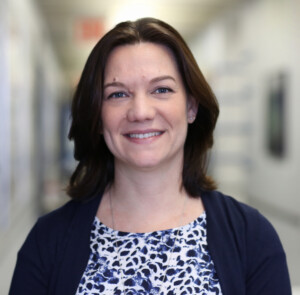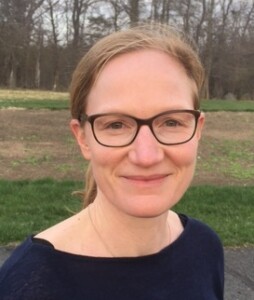PUBLIC
Lecture Series
Dr. M. Victoria Puig: Prefrontal-hippocampal neural dynamics as biomarkers of cognitive impairment and rescue in brain disorders
May 6th, 2024
Prof. Dr. Cyriel M. A. Pennartz: Orbitofrontal ensembles in sleep replay, adaptation and behavioral control
February 6th, 2024
Vikaas Sohal, MD Ph.D.: The roles of interneuron-generated synchrony in cognition and emotion
January 23rd, 2024
Laura DeNardo, Ph.D.: Developmentally-distinct architectures in top-down circuits
November 7th, 2023
Erin Rich, MD, Ph.D.: Neural coding for flexible behavior in prefrontal cortex
October 10th, 2023

Cognitive processes depend on the collective activity of populations of neurons. Together, interacting neurons produce complex dynamics that may reveal key mechanisms linking neuron firing to thought and behavior. In this talk, I will discuss our recent work investigating the rich dynamics of population activity in the prefrontal cortex. Across different tasks requiring evaluation, value-based decision-making, and working memory, neural populations reveal how cognitive processes evolve and how relevant information is structured and restructured to meet task demands. Together, these studies illustrate how population dynamics can provide important insights into neural mechanisms of cognition that are poorly captured by examining single neurons in isolation.
Paul Anastasiades, Ph.D.: Synaptic development of sensory and prefrontal circuits
September 19th, 2023

During postnatal development, the brain undergoes a series of processes that bring about its mature architecture. These include neuronal migration, apoptosis, synapse formation and maturation. The timeline of cortical maturation is thought to be hierarchical, with primary sensory areas maturing earlier than higher-order areas, such as the prefrontal cortex (PFC). The cortex is a laminar structure with distinct synaptic inputs targeting specific layers. Within each cortical area there is also evidence for layer-specific development. For example, sensory critical periods in the mouse somatosensory barrel cortex (S1BF) follow an “outside-in” pattern, occurring first in thalamo-recipient layer (L)4 followed by superficial L2/3. The maturation of the PFC is thought to be delayed to that of S1BF. However, much less is known about the timeline of this maturation, particularly with respect to the development of synaptic connectivity within specific layers. Determining this may provide insight into when different inputs or cell types undergo synapse maturation. This project aims to determine similarities and differences in the synaptic maturation of a primary sensory barrel cortex (S1BF) and the PFC. To do so we have developed a pipeline for high-throughput synaptic puncta analysis using transgenic mice that express the synaptic protein PSD-95 tagged to GFP. We will compare the maturation of synapses between layers and regions to determine both common rules and region-specific differences of synapse development between cortical areas.
Stefano Fusi, PhD: Disentangled and flexible representations in the prefrontal cortex and the hippocampus
June 6th, 2023
The curse of dimensionality plagues models of reinforcement learning and decision-making. The process of abstraction solves this by constructing variables describing features shared by different instances, reducing dimensionality, and enabling generalization in novel situations. Stefano Fusi’s team characterized neural representations in monkeys and humans performing a task described by different hidden and explicit variables. Abstraction was defined operationally using the generalization performance of neural decoders across task conditions not used for training, which requires a particular geometry of neural representations. Neural ensembles in prefrontal cortex, hippocampus, and simulated neural networks simultaneously represented multiple variables in a geometry reflecting abstraction but that still allowed a linear classifier to decode a large number of other variables (high shattering dimensionality). Furthermore, this geometry changed in relation to task events and performance. These findings elucidate how the brain and artificial systems represent variables in an abstract format while preserving the flexibility conferred by high shattering dimensionality.
Timothy Buschman, PhD: Neural Dynamics of Cognitive Control
May 23, 2023
Cognitive control guides behavior by controlling what, where, and how information is represented in the brain. Several mechanisms have been proposed to support cognitive control, such as gain modulation or synchronizing neural activity. In this talk, Timothy Buschman will present evidence for a new mechanism of cognitive control: by dynamically transforming neural representations into and out of different ‘subspaces’, cognitive control can route information through the brain.
Jessica Cardin, PhD: State-dependent patterns of neuromodulatory signaling in the cortex
April 18, 2023

Spontaneous and sensory-evoked cortical activity is highly state-dependent, promoting the functional flexibility of cortical circuits underlying perception and cognition. Using neural recordings in combination with behavioral state monitoring, Jessica Cardin’s team finds that arousal and motor activity have complementary roles in regulating local cortical operations, providing dynamic control of sensory encoding. They recently developed an approach for dual mesoscopic imaging of acetylcholine release and neural activity across the entire cortical mantle in behaving mice. They find spatiotemporally heterogeneous patterns of cholinergic signaling across the cortex. These findings suggest dynamic state-dependent regulation of cortical network operations at the levels of both local and large-scale circuits.
Nicholas A. Steinmetz, PhD: Large-scale electrophysiology with Neuropixels: Reproducibility and Distributed Coding
February 21, 2023

In this talk, Nicholas Steinmetz will describe the use of Neuropixels technology to make large-scale electrophysiological recordings from the brains of awake mammals. In particular, he will focus on the efforts of the International Brain Laboratory to establish the reproducibility of measurements made with Neuropixels across experimenters and across laboratories. Moreover, the results of experiments using Neuropixels to study distributed coding of vision and action across the mouse brain will be described.
Marie Carlén, PhD: Towards functional maps of the mouse prefrontal cortex
December 13, 2022
The structure and function of the prefrontal cortex (PFC) across species remain unresolved. Taking advantage of the technological toolbox available to studies in rodents, our studies aim to outline the mouse PFC through integration of structural, molecular and functional characteristics. Whole-brain tracing of connectivity and spatial transcriptomics give a novel and unbiased view of structure of the mouse PFC. The connectivity outlines the mouse PFC as a module with dense intraconnectivity, questioning independent processing in discrete prefrontal subregions. In line with this, higher cognitive functions are considered to be integrative rather than localized. Marie Carlén in her talk presents her lab’s finding on how the PFC can be annotated based on neuronal activity and what the neuronal activities reveal about hierarchy and local and non-local functions in prefrontal subterritories.
Ofer Yizhar, PhD: Optogenetic dissection of local and long-range connections in prefrontal circuits
December 6, 2022
The PFC plays a part in multiple brain-wide networks regulating behavior, and its long-range connections to different cortical and subcortical targets are thought to be involved in distinct behavioral functions. Ofer Yizhar’s team is interested in understanding how PFC microcircuits process behavioral information, and how distinct PFC output neuron populations regulate learning, decision-making and social behavior. First, he will describe a set of experiments aimed at understanding the structure of synaptic connectivity among amygdala-projecting neurons in the mPFC. Using single-neuron two-photon optogenetic stimulation and imaging, he demonstrates that these neurons show unique layer-specific connectivity features compared with randomly sampled mPFC neurons. To efficiently suppress synaptic transmission, they engineered a new set of bistable rhodopsins that selectively couple to the Gi/o signaling pathway and can be used to suppress synaptic release in vitro and in vivo, in a spatially and temporally-precise manner.
Christine Constantinople, PhD: Neural mechanisms of inference
October 4, 2022
Julijana Gjorgjieva, PhD: Emerge of organization and computation in neural circuits
September 6, 2022
Generating brain circuits that are both flexible and stable requires the coordination of powerful developmental mechanisms acting at different scales, including activity-dependent synaptic plasticity and changes in single neuron properties. The brain prepares to efficiently compute information and reliably generate behavior during early development without any prior sensory experience but through patterned spontaneous activity. After the onset of sensory experience, ongoing activity continues to modify sensory circuits, and plays an important functional role in the mature brain. Using quantitative data analysis, experiment-driven theory and computational modeling, Julijana Gjorgjieva will present a framework for how neural circuits are built and organized during early postnatal development into functional units, and how they are modified by intact and perturbed sensory-evoked activity.
Prof. Dr. Sonja Grün: Spatio-temporal spike patterns in monkey and model
August 30, 2022
It has been postulated that information processing in the brain is based on precise temporal correlation of neural activity across populations of neurons. In a recent study, we found spatio-temporal spike patterns (STPs) in experimental recordings (10×10 Utah array) from monkey motor cortex using the SPADE method, while the animals were performing a reach-to-grasp task. These patterns were not clustered in cortical space, but distributed. Particularly surprising was, that individual neurons participate in different STPs occurring in different behavioral epochs. This also means that neurons are part in different cell assemblies. In a further study, we were wondering if those STPs could be explained by a synfire chain (SFC) like model. An SFC is composed of groups of neurons connected in feed-forward manner from one group to the next with high convergence and divergence.
Prof. Dr. Peter Uhlhaas: Neural Oscillations, Sensory Dysfunctions and Schizophrenia: A Translational and Developmental Perspective
July 1, 2022
Due to recent studies, schizophrenia has been associated with aberrant neural dynamics and disturbances in excitation/inhibition (E/I) balance. Several studies, Prof. Dr. Uhlhaas’ team carried out, highlighted a pronounced impairment in high-frequency activity in both chronic and unmedicated patients, which could provide novel insights into basic circuit mechanisms underlying cognitive and perceptual dysfunctions. Their recent work has employed MEG to develop a biomarker for early detection and diagnosis of ScZ. In patients, they found marked changes in the synchrony of gamma-band oscillations in visual and auditory cortices during sensory processing which predicted clinical outcomes. In addition, CHR-participants were characterized by elevated broad-band gamma-band activity at rest which correlated with increased glutamate levels. Parallel EEG-recordings in patients with 22q.11.2 deletion syndrome obtained similar findings with auditory and visual paradigms, highlighting the potential of EEG/MEG-based biomarkers for the early diagnosis of psychotic disorders.
Prof. Dr. Martin Vinck: The role of rhythms and spiking sequences in predictive processing
June 21, 2022
Recurrent processing is a key characteristic of the cerebral cortex. Major neuroscience theories posit that a key function of recurrence is to subserve predictive processing of sensory information. As recurrent processing naturally gives rise to cortical dynamics in different frequency bands and spiking sequences, it is believed that these play specific roles in predictive processing. Here, Prof. Dr. Martin Vinck shows evidence for highly specific correlates of high-frequency gamma-band oscillations in predictive processing and attention, counter to the prevailing view on these rhythms. He links these results to the circuit mechanisms underlying these rhythms as well as their surprising impact on downstream targets. Furthermore, the predictive processing as a guiding principle for synaptic plasticity is discussed.
Dr. Claudia Böhm: Time, space and memory in prefrontal cortex
during flexible behavior
May 10, 2022
Flexibly storing and updating memory content is a fundamental ability of animals in which prefrontal cortex (PFC) is believed to play a major role. Dr. Claudia Böhm’s team showed in a goal-directed flexible spatial working memory task that across a broad population of PFC neurons there is no evidence that the delay period contained current-goal-specific memory in any previously reported form. This suggests that previously described patterns do not hold goal-specific information if it needs to be employed flexibly. Instead, PFC activity encoded important spatial locations and grouped them according to their meaning in the task. Selectivity for multiple variables is a common feature of PFC neurons and single neurons can be selective for space and time. However, decoding of space and time at goals and during the delay across categories does rely on overlapping sets of neurons, respectively. These results suggest a functional preference for space or time among PFC neurons.
Christoph Kellendonk, PhD: Adolescent thalamic inhibition leads to long-lasting
impairments in prefrontal cortex function
April 26, 2022
Impaired cortical maturation is a postulated mechanism in the etiology of neurodevelopmental disorders, including schizophrenia. In sensory cortex, activity relayed by the thalamus during a postnatal sensitive period is essential for proper cortical maturation. Whether thalamic activity also shapes prefrontal cortical maturation is unknown. Here, Christoph Kellendonk will present data that inhibiting the mediodorsal and midline thalamus in mice during adolescence leads to a long-lasting change in prefrontal cortex function and behavior. In contrast, thalamic inhibition during adulthood has no long-lasting consequences. Exciting the thalamus in adulthood reverses cognitive deficits. These data point to adolescence as a sensitive window of thalamo-cortical circuit maturation and provide a potential therapeutic strategy for rescuing cognitive deficits in neurodevelopmental disorders.
Prof. Dr. Earl K. Miller: Cognition is Rhythm
March 22, 2022
Working memory is the sketchpad of consciousness, the fundamental mechanism the brain uses to gain flexible, volitional control over its thoughts and actions. For the past 50 years, working memory has been thought to rely on cortical neurons that fire continuous impulses that keep thoughts “online”. However, new work from Prof. Dr. Earl K Miller’s lab has revealed more complex dynamics. The impulses fire sparsely and interact with brain rhythms of different frequencies. Higher frequency gamma (> 35 Hz) rhythms help carry the contents of working memory while lower frequency alpha/beta (~8-30 Hz) rhythms act as control signals that gate access to and clear out working memory. In other words, a rhythmic dance between brain rhythms may underlie your ability to control your own thoughts.
Outreach
Watch the rat ‘Snowflake’ perform experiments and Prof. Dr. Ilka Diester and Dr. Artur Schneider explain their research in this ‘Terra Mater Wissen’ video on Servus TV (only available in German)
Watch this @fakecheck video about ‘Earthing’ with comments from Prof. Dr. Ilka Diester (only available in German)
Chair: Ilka Diester (University of Freiburg, IMBIT // BrainLinks-BrainTools, Germany)
Chair: David Dupret (University of Oxford, United Kingdom)
Upcoming Meetings
Past Meetings
The Staff Retreat 2023 of FOR5159 aimed at discussing and strengthening the collaborations between the individual research groups. The discussion of collaborations have been followed by workshops on piecewise-linear recurrent neural networks, git, scientific illustrations and behavioral modelling. Moreover, significant time was dedicated to improving equality in the consortium through a talk by Anelis Kaiser-Trujilo on the difference about sex and gender, ‘hunting’ for sex differences in sciene and artificial grouping as well as unbiased options for data analysis, followed by workshops on the topic.
The Annual Meeting 2023 of FOR5159 aimed at sharing and discussing the recent results gained in the individual funded groups and in the collaborations between the research groups. The progress and collaboration reports have been followed by discussions on the common gain of the consortium in the past year. Moreover, the activities (secondments, data exchange, promotion of young scientists, outreach) for the upcoming year have been planned.
The Kick-off meeting of FOR5159 aimed at defining the framework of the consortium by introducing recent discoveries on the field and at initiating collaborations between the funded groups. The introduction of individual projects has been followed by discussions on the common gain and needs of the members of the consortium. Moreover, the common activities (secondments, data exchange, promotion of young scientists, outreach) have been planned.















